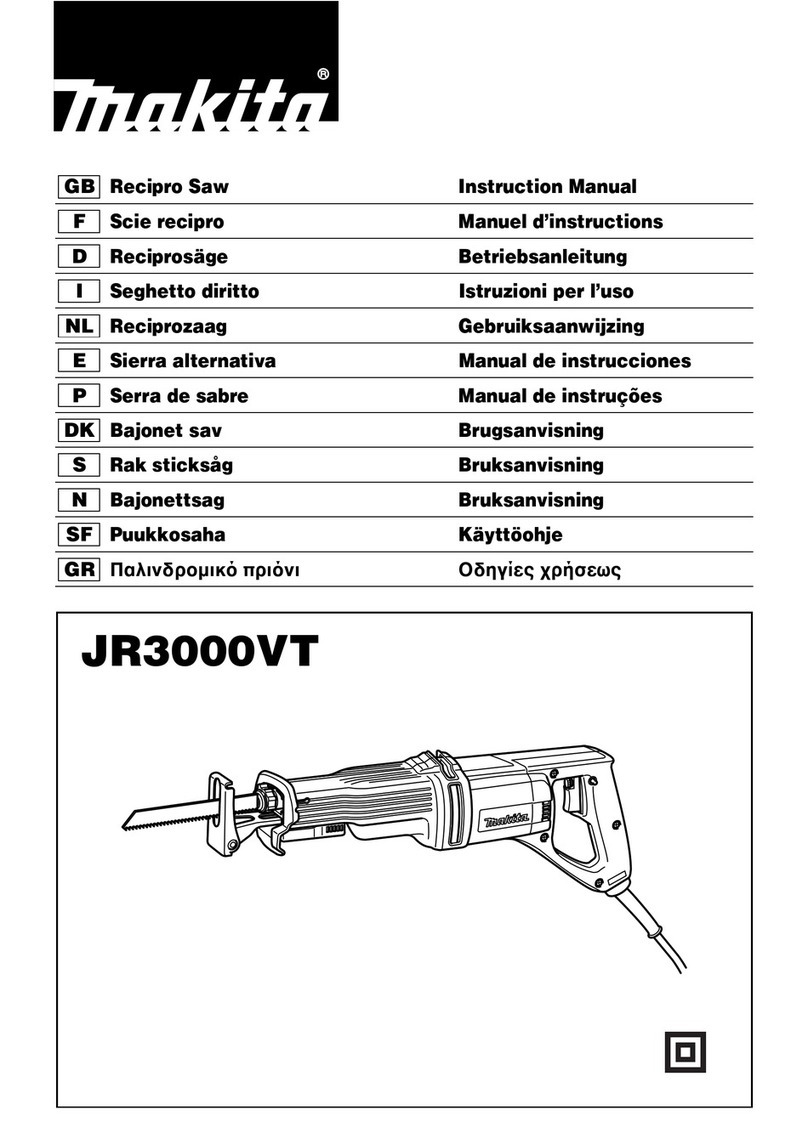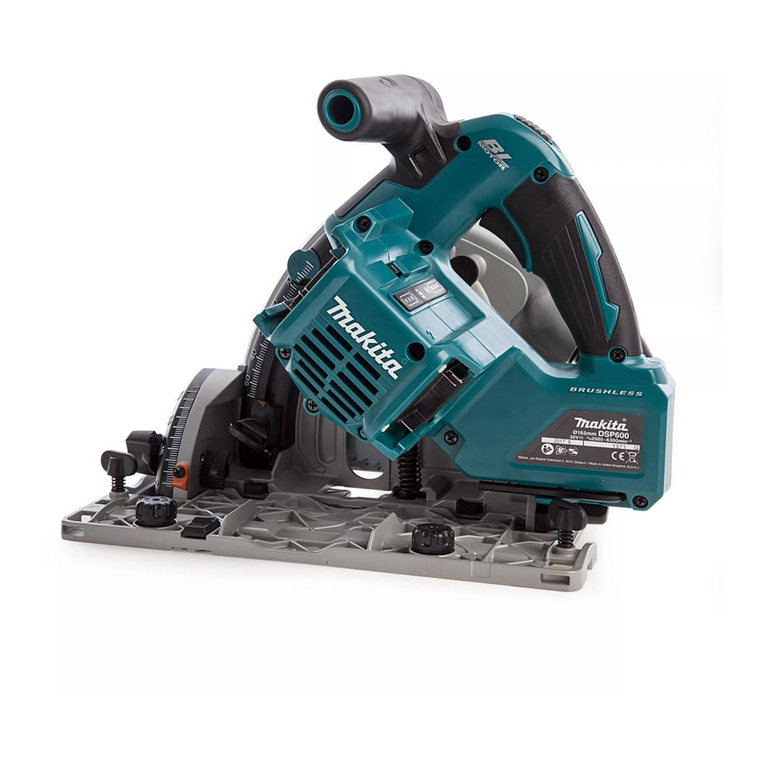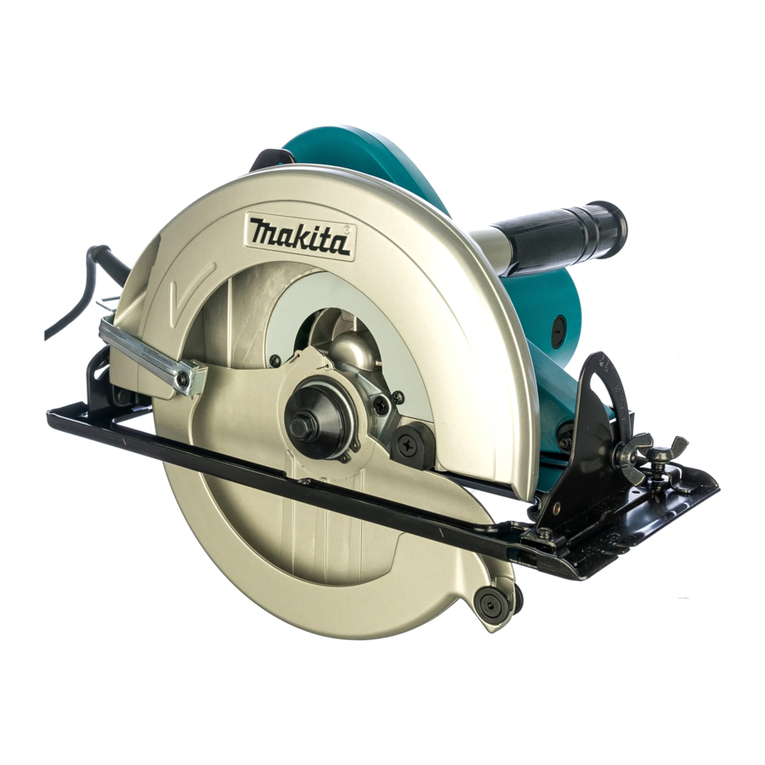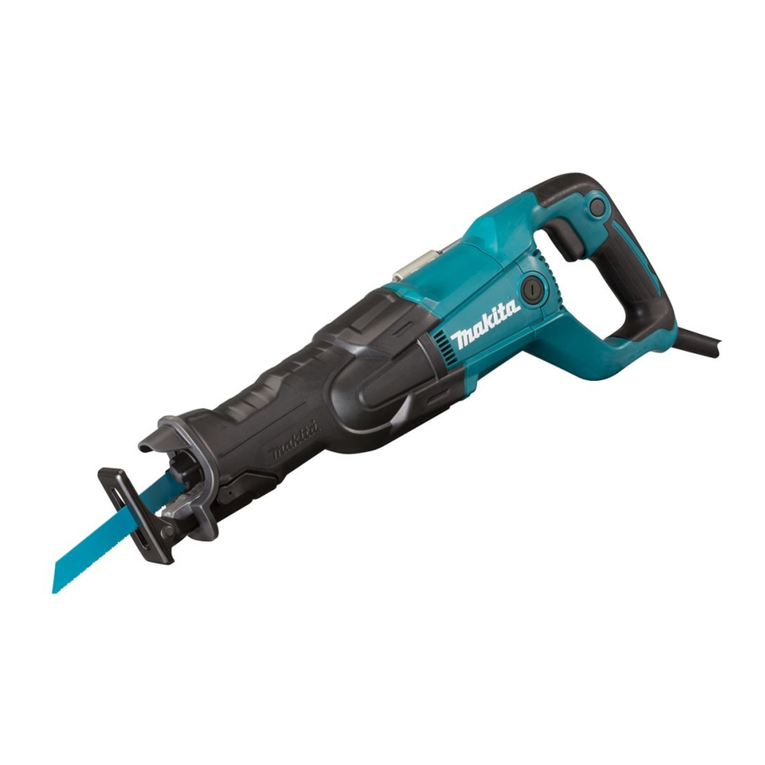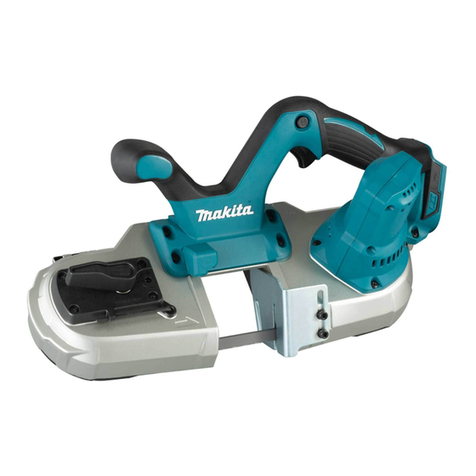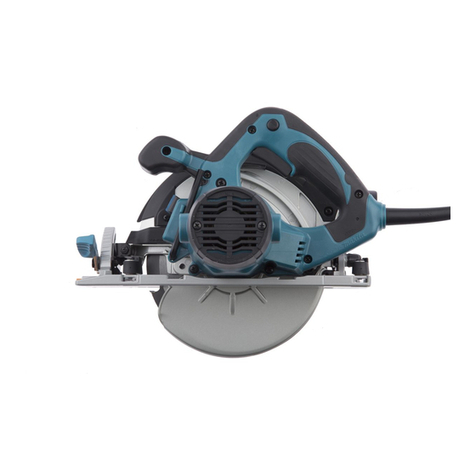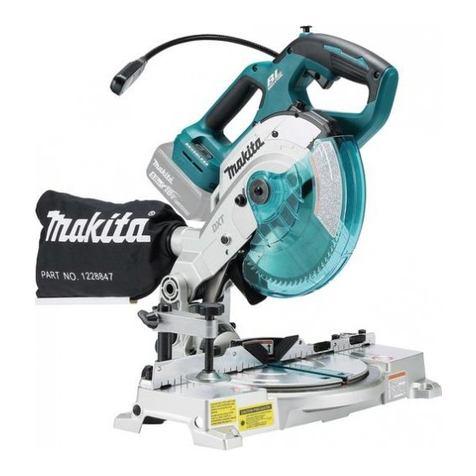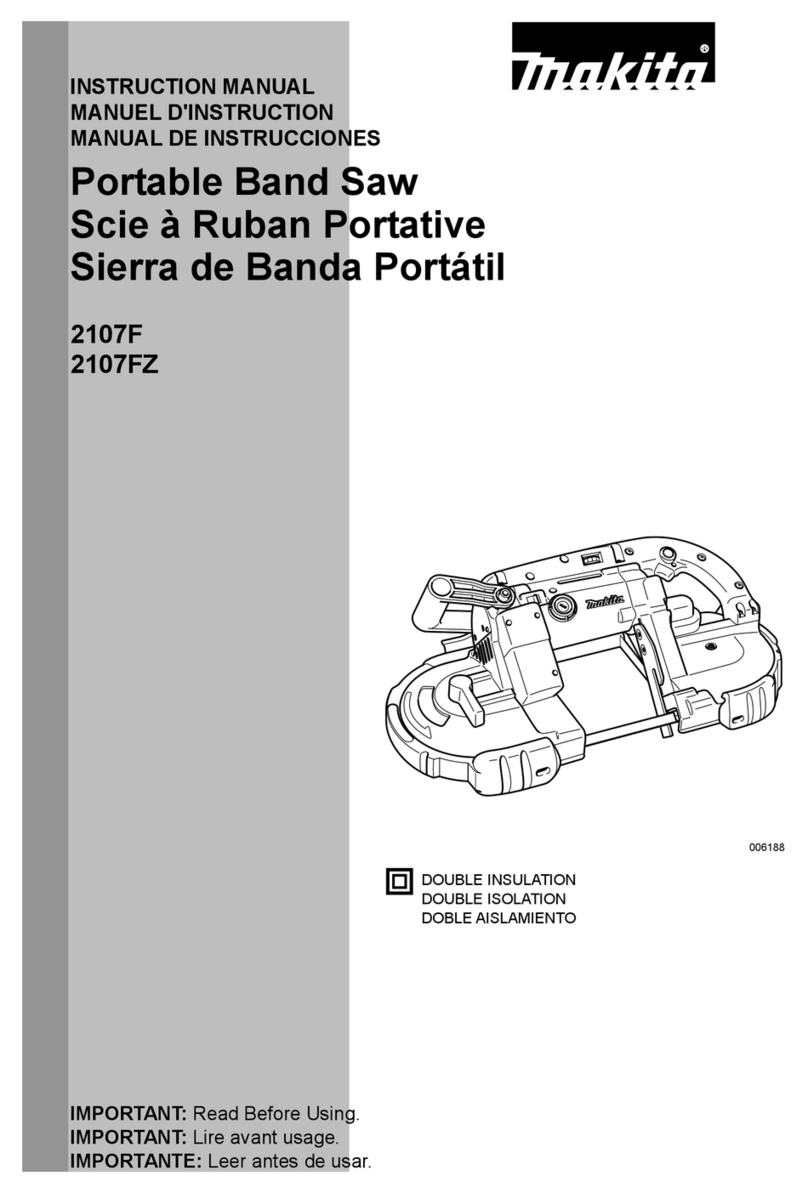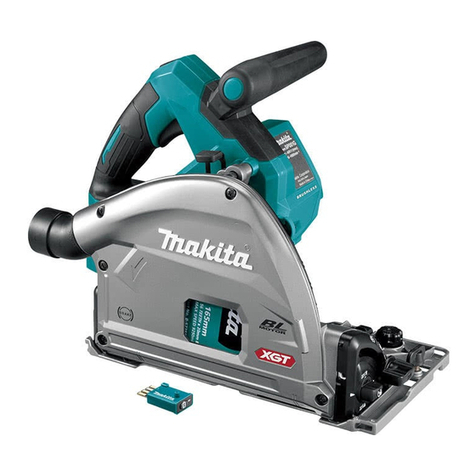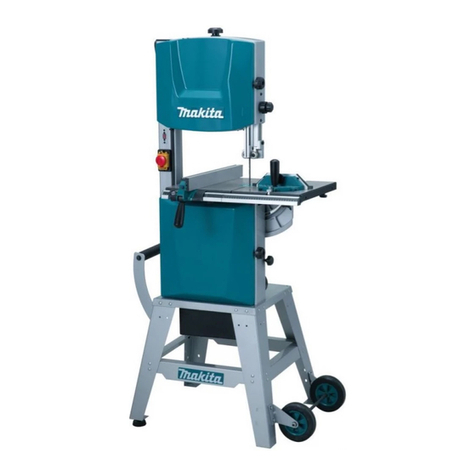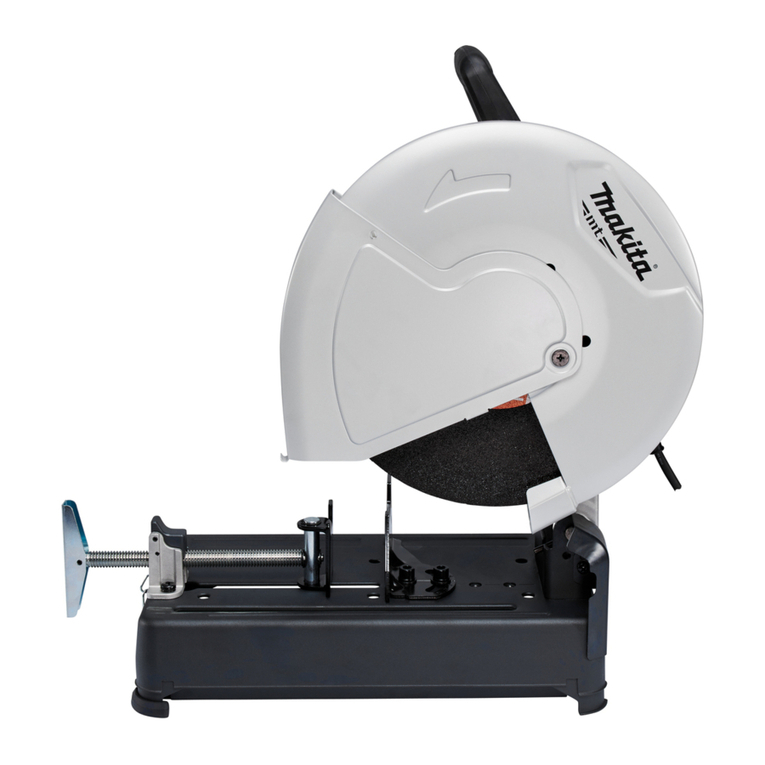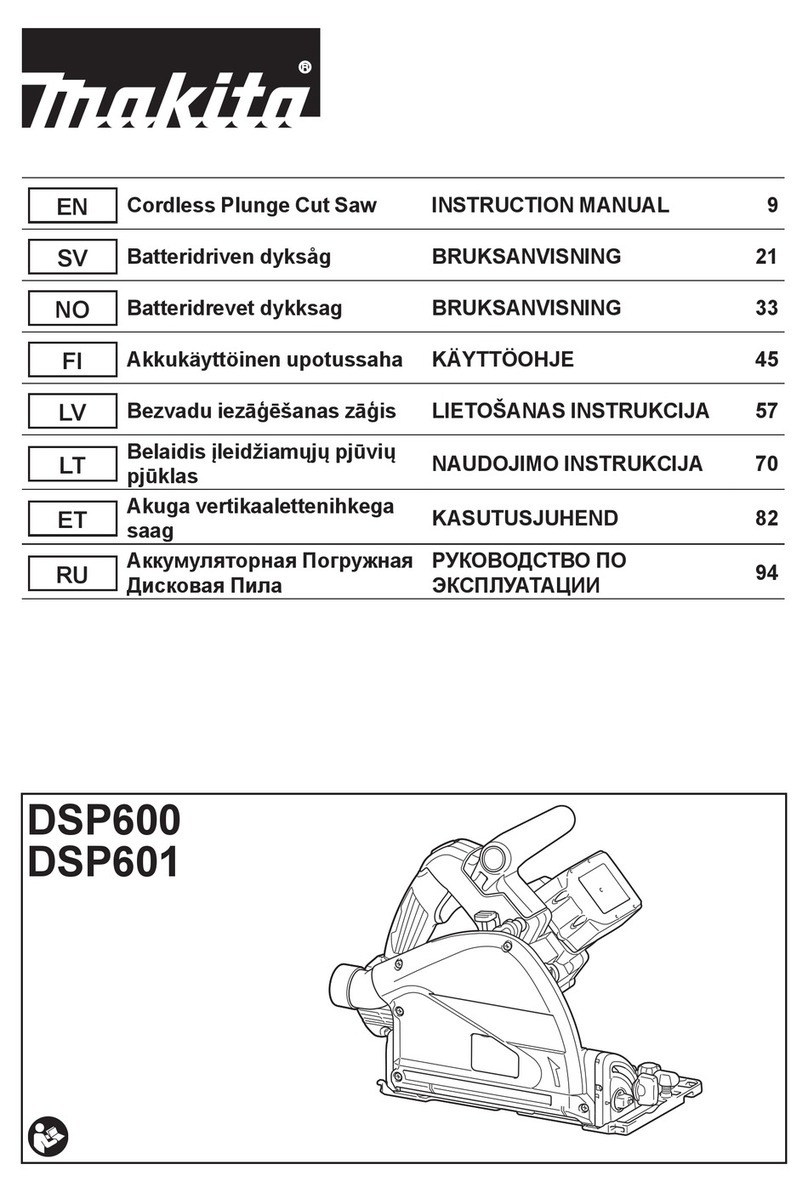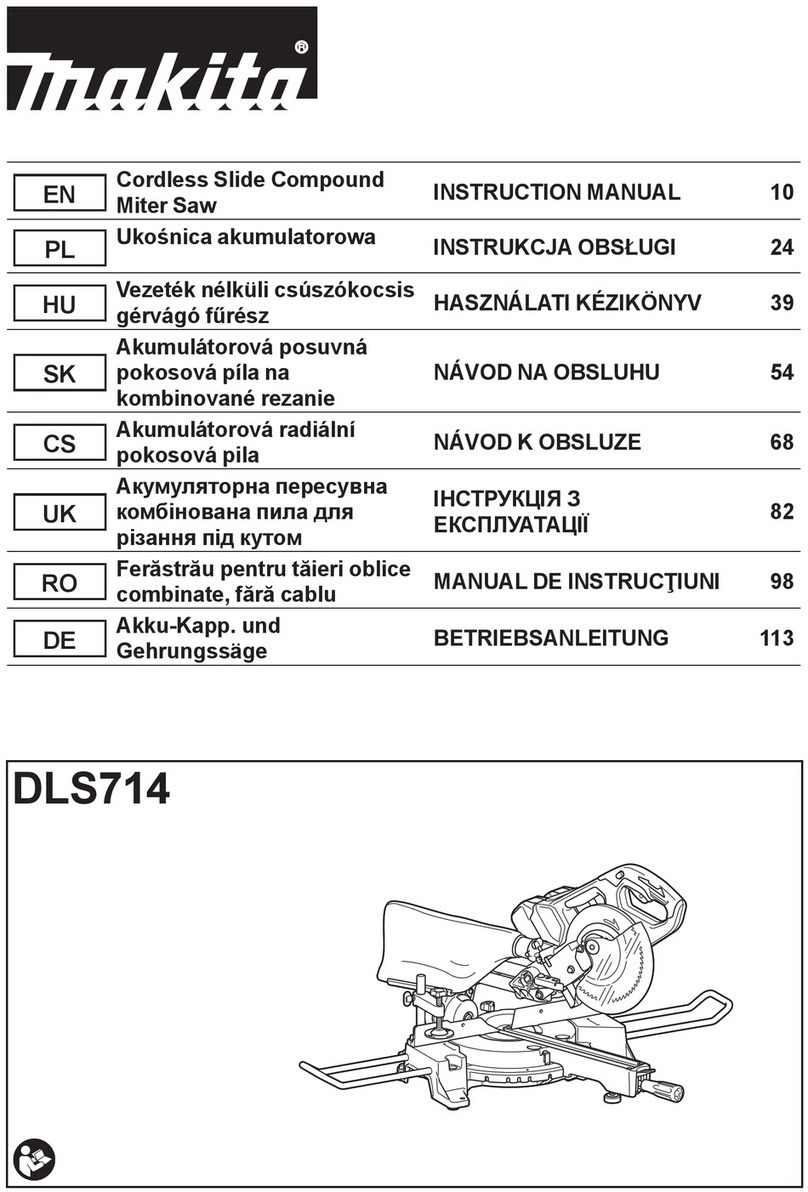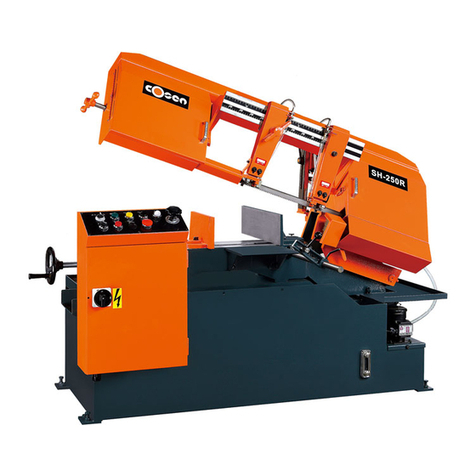Features and benefits P 2 / 15
BJR240
Incredible low vibration with counterbalancing
system in its gear unit.
Model No. LoadedNo loaded
BJR240 8.7m/sec.2 10.3m/sec.2
Mod. A 11.5m/sec.2 19.8m/sec.2
Mod. B 20.4m/sec.2 20.9m/sec.2
Mod. C 14.4m/sec.2 16.2m/sec.2
Mod. D 8.1m/sec.2 9.4m/sec.2
MAKITA
Lower noise level
Comparison of the specifications
Model No. LoadedNo loaded
BJR240 82 dB 94 dB
85 dB 94 dB
85 dB
85 dB 94 dB
97 dB
95 dB91 dB
MAKITA
BJR240
MAKITA
The figures on loaded condition are based on
the cutting of chip board 19mm in thickness.
The figures on loaded condition are based on
the cutting of chip board of 19mm in thickness.
Push-in Lock System has
made it possible to install
the blade quickly.
New tool-less blade change system
Lock off push-out system has
enabled to take off the hot saw
blade of just after work, without
touching it.
Externally accessible
carbon brush
Tool-less shoe
adjustment
Electric High /Low
speed change switch
Palm fitting
soft grip
Lock off button can be
pushed from both of left
and right.
Switch with big trigger
for easy operation
24V Ni-MH Battery with
new charging system
The fastest cutting speed among
the cordless recipro saws.
See the graph in "Comparison of Products"
at page 3.
Comparison of products
Model No.
Specifications
Voltage
Tool-less
system
Length of Stroke
: mm (1-1/4")
Strokes per
Minute :spm.(min-1) High
Dimensions
including
battery
Weight including
battery :Kg (lbs)
Low
High
Low
Suppressing the vibration
Externally accessible brush
for replacing blade
for adjusting shoe
Palm fitting soft grip
Height : mm(")
Width : mm(")
Length : mm(")
32 (1-1/4)
0 - 2,700
0 - 2,300
24
Yes
Yes
Yes
Yes
Yes
469 (18-1/2)
230 (9)
*255 (10)
88 (3-1/2)
4.4 (9.7)
*4.9 (10.8)
29 (1-1/8) 28 (1-1/8) 25 (1)
0 - 2,900 0 - 2,900
0 - 2,400
24
Yes
Yes
Yes
463 (18-1/4)
232 (9-1/8)
80 (3-1/8)
3.9 (8.6)
JR180D
23 (7/8)
0 - 2,700
18
No No
No Yes
No
Yes
Yes
NoYes
Yes
Yes
No
447 (17-5/8)
206 (8-7/8)
95 (3-3/4)
3.5 (7.7)
32 (1-1/4)
19 (3/4)
0 - 2,300 0 - 2,600
24 24 19.2
No No
No
No
Yes
Yes
Yes
Yes
Yes
Yes
495 (19-1/2)
213 (8-3/8)
76 (3)
448 (17-5/8)
240 (9-1/2)
83 (3-1/8)
3.9 (8.6) 4.3 (9.5)
393 (15-1/2)
202 (8)
76 (3)
4.5 (9.9)
*255 (10) and *4.9 (10.8) are the data when battery B2430 is attached.
Competitor A
Competitor B
Competitor C
Competitor D
Mod. A
Mod. B
Mod. C
Mod. D
Mod. D
Competitor A
Competitor B
Competitor C
Competitor D
Mod. A
Competitor
A Competitor
B Competitor
C Competitor
D
Mod. B Mod. C
